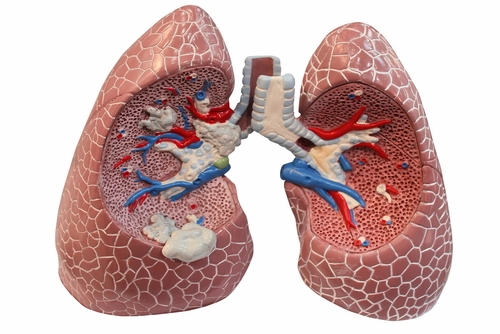Pulmonology Coding Alert
Use These 5 Tips to Appeal Your Claim Denials
Stay aware of the appeal window to improve your success. Winning appeals can result in a significant increase to your practice’s bottom line. If you feel your practice deserves reimbursement even after a denial, apply these five practice-proven tips to give your appeal its best shot. Benefits of Appealing Your Practice’s Denials “Denials are rising. Since 2016, the average denial rate was 9 percent and as of the second quarter of 2020, it had risen to 10.8 percent,” said Holly Ridge, BSN, RN, CPC, CPMA, manager of medical necessity and authorization denials for Duke Health in Durham, North Carolina, during AAPC’s HEALTHCON 2022 session, “Medical Necessity Denials — When and How to Appeal.” Ridge explained that even though the denial rates are increasing, practices who appeal their denials are successful, on average, approximately 40 to 45 percent of the time. This high success rate can translate to a substantial return on investment (ROI) depending on the services your team is appealing. Tip 1: Ensure Your Codes Help Show Medical Necessity A provider must show the medical necessity in the documentation and coding to receive reimbursement for the services performed. Without that crucial information, Medicare or commercial payers won’t authorize payment and may deny the claim. When a denial comes across your desk, you should review the information, include any missing information, and ensure the codes assigned show medical necessity for the procedures. Example: During an evaluation and management (E/M) visit, a patient experienced an acute exacerbation of their moderate persistent asthma. The physician administered albuterol, which the patient responded to well. On the report, the coder assigned the following codes: The patient’s commercial insurance denied the claim because the claim didn’t show medical necessity for the albuterol administration. By revising the claim to include J45.41 (Moderate persistent asthma with (acute) exacerbation), you’re showing the reason for the albuterol administration. “There are some medical necessity denials that are going to need an appeal and medical records to support reimbursement, but sometimes your medical necessity denials may be able to be corrected by taking a second look at that coding and see if there are any coding updates you can make,” Ridge says. Tip 2: Promote Consistency With Templates “I very strongly recommend having templates. It makes it easier on yourself, it also provides ease of workload,” Ridge said. By having templates available, your staff will be able to plug the necessary information into the appropriate places and ensure each appeal is formatted similarly. Examples of templates for different types of denials include: “Templates look cleaner, more organized, and can look more professional. Templates can also help provide content reminders to staff as they write their appeals,” Ridge added. Tip 3: Prepare Your Case Before submitting your appeal, you’ll need to defend your reasoning for reimbursement. “You really want to pull in any argument you can find that supports the safety and efficacy of providing the service that you’ve rendered,” Ridge stated. Types of resources to use in your appeal with examples include: As you compare the different resources available to back up your appeal, you may need to consider costs of information. Some nationally recognized criteria may require a subscription fee, but medical literature and medical society guidelines could be available free of charge. “[Medical literature and society guidelines] are free, they’re very reputable, they’re widely accepted as the standard of care, and they’re accessible,” Ridge said. Tip 4: Stay Aware of Your Appeal Window When a claim is denied, you’ll have a certain timeframe in which you can appeal the denial. This appeal window may be between 60 and 180 days, or it could be as short as 30 days. The appeal window timeframe varies by payer, so it’s crucial to examine the information you receive with the denial as well as the individual payer’s preferences. Work queues may allow you to use a type of scoring to prioritize payers with a short appeal window. However, if you work manually, you’ll want to educate your staff on which payers have shorter appeal windows, so your staff doesn’t miss the deadline. Tip 5: Analyze Your Denials One of the easiest ways to reduce your denials is by preventing them from the start. This can be done by analyzing your denials data. When you examine your data, you may find denials that were avoidable and preventable by making minor changes before the claims were originally submitted. At the same time, your analysis could show which types of appeals were successful and which denied services payers approved after a successful appeal. In those instances, you should continue to appeal those denials. Plus, by analyzing your denials, you can focus on what to prioritize during appeals, as well as what improvements your practice can make on the front end through education, proper coding, and documentation to reduce the number of denials you receive.


Related Articles
Pulmonology Coding Alert
- ICD-10-CM:
Are Your RSV Coding Skills Ready to Handle Rising Case Numbers?
Know when to code infections due to RSV. Respiratory syncytial virus (RSV) is a respiratory [...] - Reimbursement:
Use These 5 Tips to Appeal Your Claim Denials
Stay aware of the appeal window to improve your success. Winning appeals can result in [...] - Vaccination Information:
Give Your 2022-2023 Flu Vaccination Coding a Boost
Don’t forget to assign Z23 for a vaccination encounter. Knowing which influenza vaccine product code [...] - You Be the Coder:
Do You Recall How to Report Negative Flu Test Results?
Question: A 31-year-old patient visited our urgent care clinic complaining of a high fever for [...] - Reader Question:
Remember to Also Code the Infection for J44.0
Question: A patient with COPD presented to an urgent care clinic complaining of cough, sore throat, [...] - Reader Question:
Are 90471 and +90472 Correct for a Flu and COVID-19 Vaccination Encounter?
Question: A 40-year-old patient visited our clinic for their annual flu vaccine. During the visit, [...] - Reader Question:
Code a 90-Minute Car Seat Test
Question: I have a report that indicates a pulmonologist performed a car seat test on a [...]




